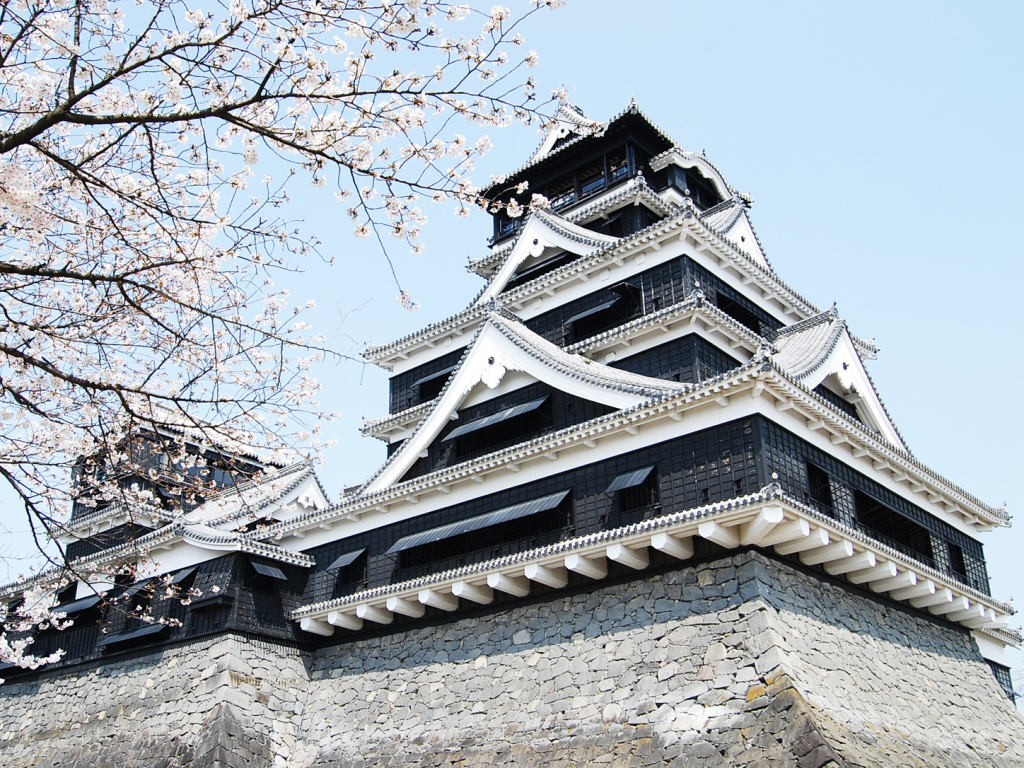Day 1: Kitakyushu
The gateway to Kyushu, Kitakyushu lies on the northernmost coast and has long been a hub for international and domestic trade. Hit this city for beautiful coastal views, historic buildings and exceedingly fresh seafood.
9:20 am – Arrival in Kyushu
Get an early start by taking a 7:40am flight from Tokyo’s Haneda Airport to Kitakyushu Airport. Take the airport bus directly to Kokura – a short 30-minute journey – on one of several departures to this old castle town within Kitakyushu city.
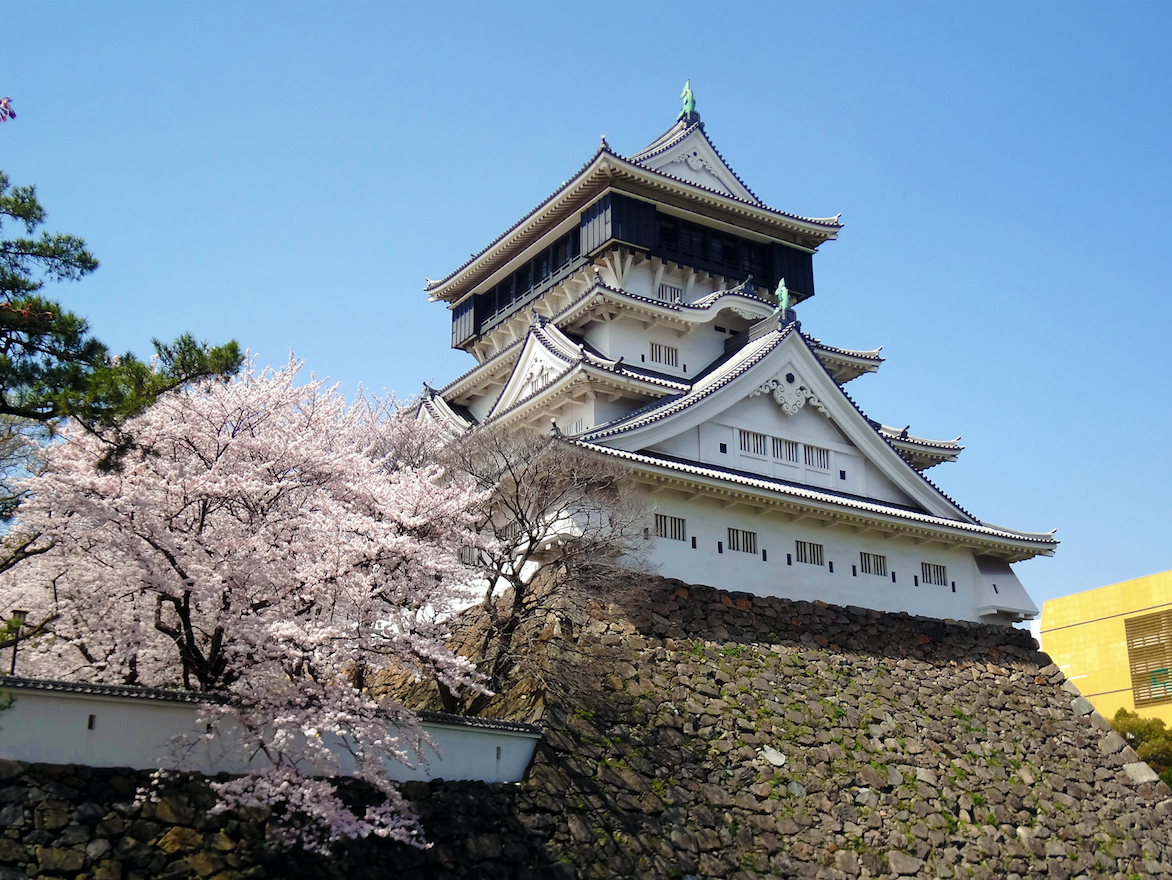
11am – True Japanese Tradition
Dive into the region’s history at Kokura Castle, which gives insight into the region’s illustrious past as well as a panoramic view of the area’s present. Make the most of your visit by booking a tea ceremony experience at the Kokura Castle Japanese Garden. (Note that group reservations must be made in advance by telephone at 093-582-2747.)
1pm – Lunch at a Local Market
Wander over to charming Tanga Ichiba, a bustling local market that’s nicknamed the Kitchen of Kitakyushu. It retains a nostalgic postwar feel and is known for its fresh and pickled fish. Its colorful atmosphere and tantalizing aromas make it a great pitstop on your trip. Rub shoulders with locals as they shop for groceries and their favorite foods such as nukadaki (sardines boiled in rice-bran paste), then stop by one of the many eateries along the arcade for lunch. Here you’ll find a selection of local specialties, including sushi, udon and soba noodles, tempura, daigakudon and more.
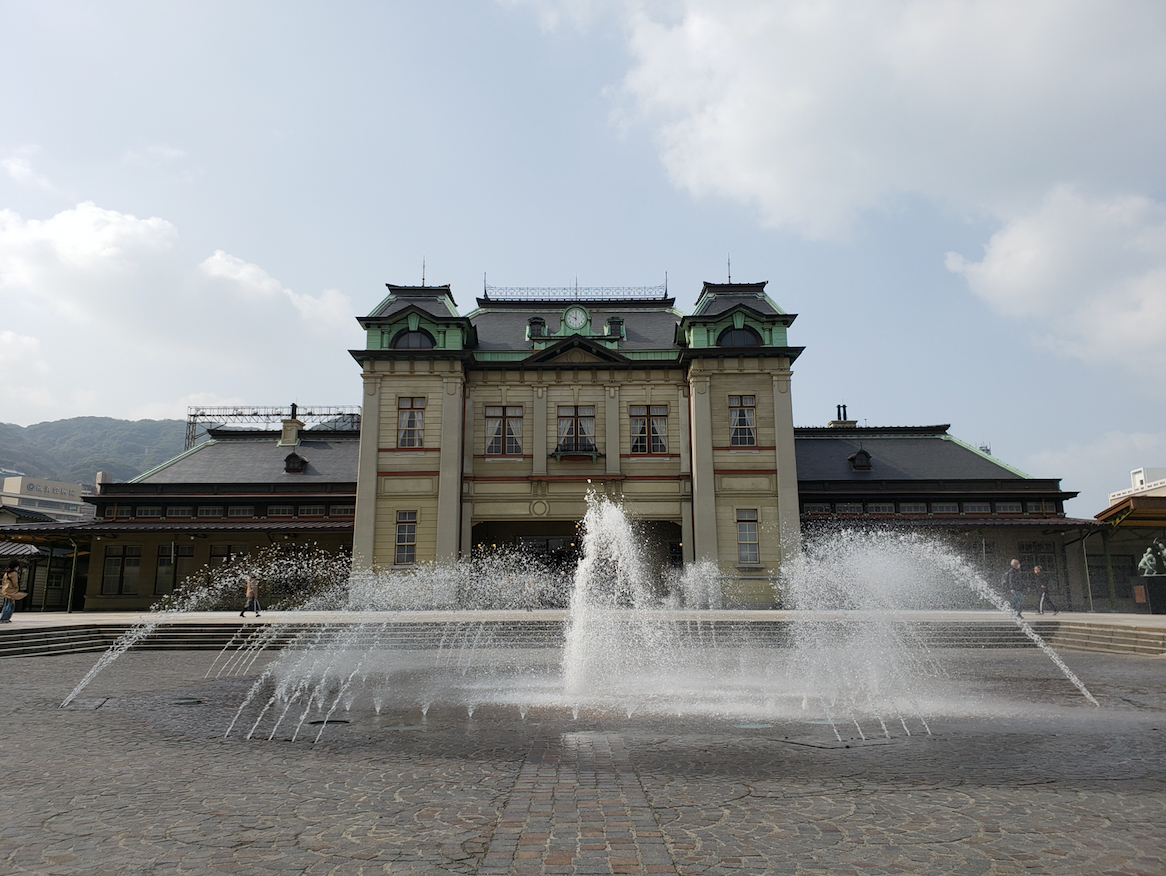
2pm – A Historic Harbor
After lunch, head to Moji Port, which opened its doors to international trade in 1889. Beautiful brick buildings that were then the epitome of modernity remain well-preserved and give the area a comfortable retro feel. Grab a map of historic buildings at the newly refurbished Mojiko Station, then head out on a historic city walk. Highlights include the former Moji Mitsui Club, where Albert Einstein and his wife stayed on a visit in 1922, the stunning Sankiro restaurant, and the Dalian Friendship Memorial. For the full nostalgic experience, book a rickshaw ride.
4pm – On a Border Under Water
For an underwater thrill, visit the Kanmon Pedestrian Tunnel next to Moji Port. It connects Kyushu to the main island of Honshu underneath the Kanmon Strait. Straddle the border – marked clearly in the tunnel – to stand in two prefectures at once. The tunnel is 780 meters long and takes about 15 minutes to cross over to Shimonoseki in Yamaguchi. Best of all, it’s completely free.
5:30pm – Bolt Down Some Baked Curry
Tuck into an early dinner of one of Moji Port’s most famous dishes: baked curry. There are more than 20 eateries to choose from, many of which offer a broad selection of curries that you can pair with award-winning local craft beers.
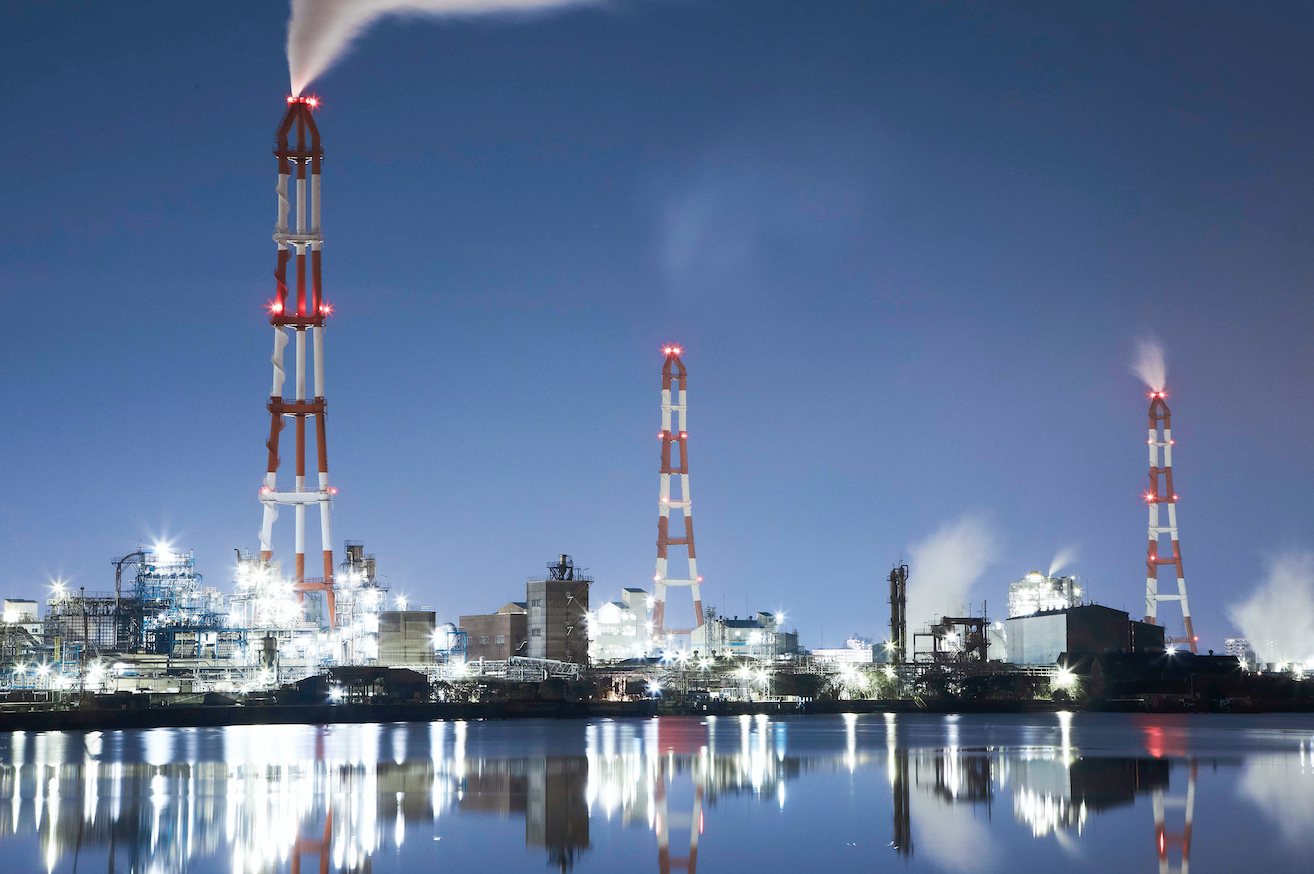
7pm – All Aboard!
It wouldn’t be a visit to a port city without a trip out on the water. We recommend a short cruise to enjoy views of Kitakyushu’s illuminated factories from the ocean. Kitakyushu is one of Japan’s four main industrial areas and has contributed greatly to the development of the country’s modern industry. Look out for the beautifully lit steel mill and chemical plant, located on the stretch of coastline between Kanmon Strait and Dokai Bay.
9pm – Moji Port By Night
End your first day in Kyushu at Bar Tempo, with its deep red interior and view over the sparkling waters of the port. Enjoy a selection of Japanese and international whiskies, local brews and original cocktails before turning in for the night.
Kyushu is the third largest island of Japan’s four main islands and though it’s one of the least explored, it has a lot to offer the intrepid traveler. Visit four of Kyushu’s most fascinating cities in five days to get a taste of this southwestern island paradise.
Day 2: Kitakyushu and Fukuoka
10am – Toilet Tour
Start your morning by going down the drain at Japan’s most famous toilet maker TOTO’s own museum, TOTO Museum. The company has been at the forefront of Japan’s famously high-tech toilets since its foundation in 1917, and this is the place to learn all you could ever need to know about potties and related products.
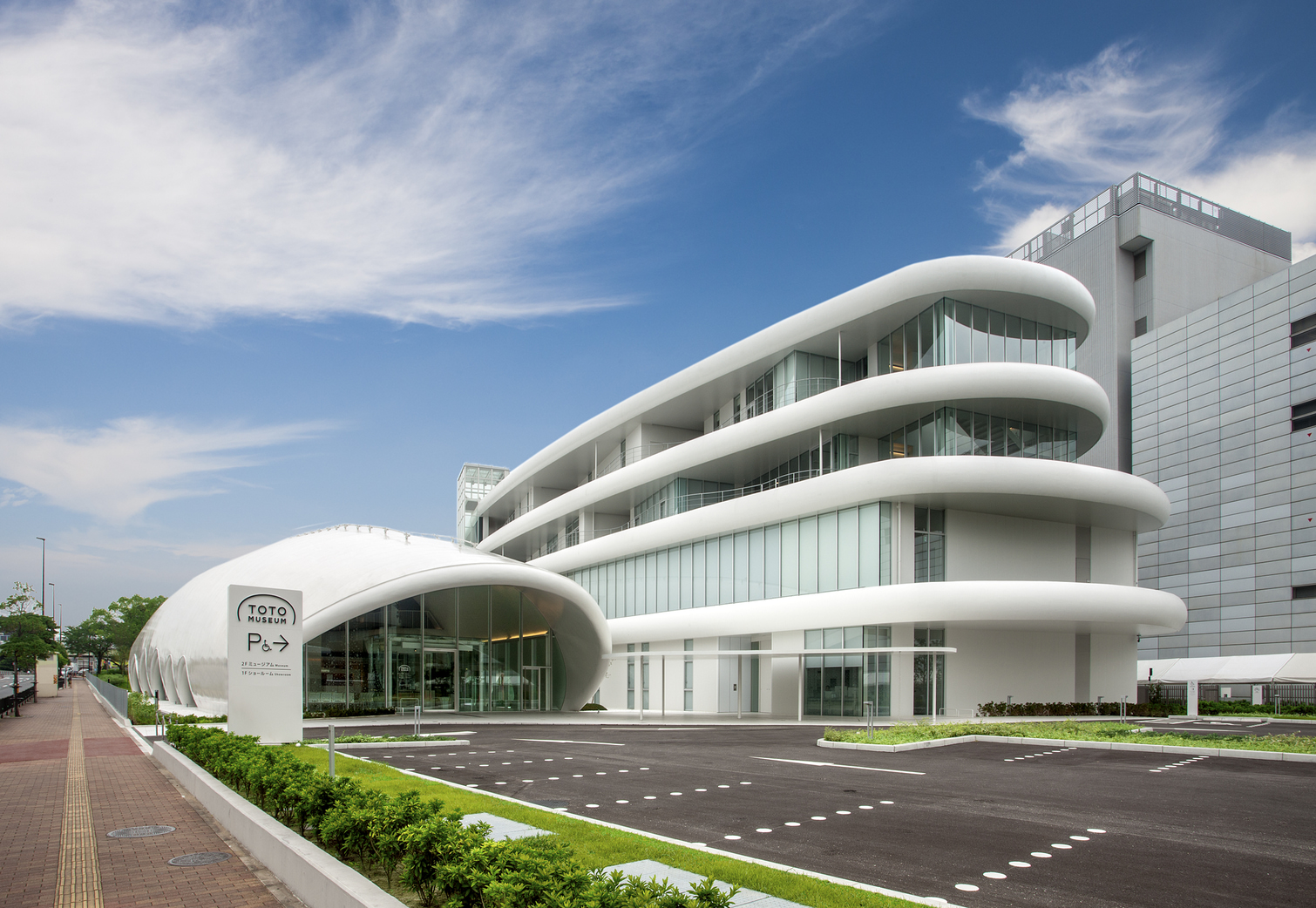
11:30am – Arty Afternoon
Designed by Kyushu-born architect Arata Isozaki, Kitakyushu Municipal Museum of Art is a unique structure located on top of a hill, offering views of the city and the ocean beyond. The museum boasts a collection of more than 7,000 artworks, and the surrounding Bijutsu no Mori Park showcases a number of sculptures scattered across the grounds. Grab a bite at Cafe Musée and shop around for souvenirs before heading south to your next destination: Fukuoka city.
As Kyushu’s largest city and Fukuoka Prefecture’s capital, Fukuoka has a burgeoning startup culture and a vibrant nightlife. Originally two separate cities on opposite sides of the Naka River, Hakata and Fukuoka merged in 1889 and the contrasts between the areas are still clearly visible today.
1:30pm – Historical Hakata
Travel back in time in Hakata Old Town, an area that is littered with temples and retains its traditional charm. Wander the streets and alleyways to get a taste of the past and find a slew of hidden photo spots. Tochoji Temple is one of these. It was founded in 806 and is the head temple of the Buddhist Shingon sect – and it is a treasure trove of new and old points of interest. Its bright vermillion five-storied pagoda almost seems to glow against a blue-sky backdrop. The Fukuoka Daibutsu near the entrance to the main temple building was completed as recently as 1992 after four years of work, and is tucked away in the Great Buddha Hall.
Next, head to Kushida Shrine, a compact shrine complex that is bursting at the seams with fascinating cultural insights. Here you’ll find a yamakasa festival float on display, otherwise seen in action in the summer at the Hakata Gion Yamakasa Festival. Before leaving, test your strength with the lifting stone on display. Several sumo wrestlers, including the record-breaking Hakuho Sho, have proven their power to the gods by carrying one of these rocks here. Drop by the lively Kawabata-dori shopping street adjacent to the shrine for an afternoon coffee and a look at daily life in Fukuoka city.
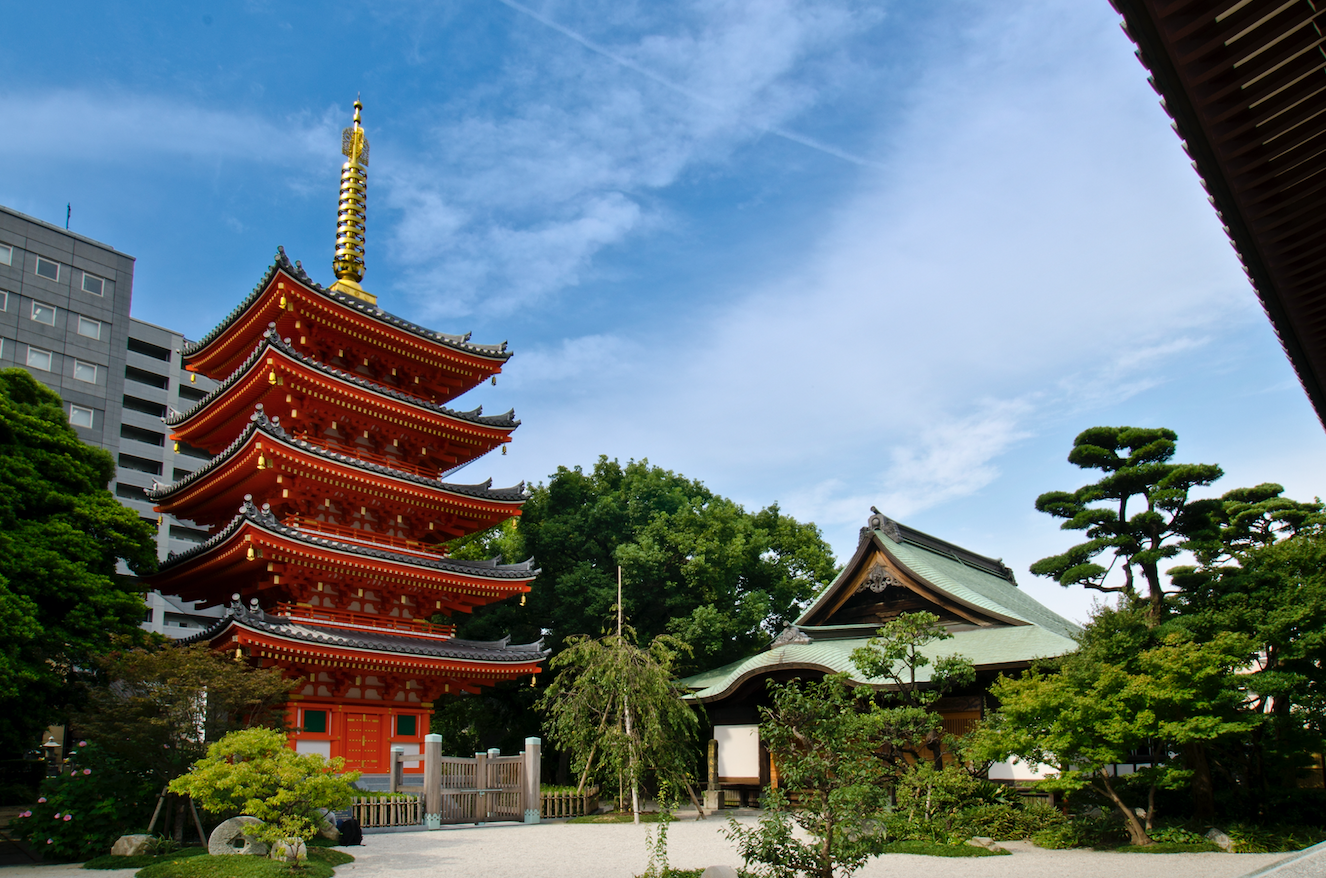
6pm – Get to Know the Locals
Fukuoka is famous for its night street stalls – especially in the Tenjin area. Here locals and tourists alike gather to eat, talk and drink, many wandering from stall to stall and sampling dishes instead of staying put all evening. Other local haunts include tachinomi (standing bars) and the custom of kakuuchi (drinking nihonshu at a sake store rather than at a restaurant) is becoming an increasingly popular pastime.
Explore the back alleys and narrow streets for charming hole-in-the-wall bars to get a vibe of the city. For creative seafood nibbles, an extensive selection of Kyushu’s distilled spirit, shochu, as well as wine and local craft beers, head to the Daimyou Akasaka area. Here, you’ll find plenty of popular standing bars and even a few venues offering live music.
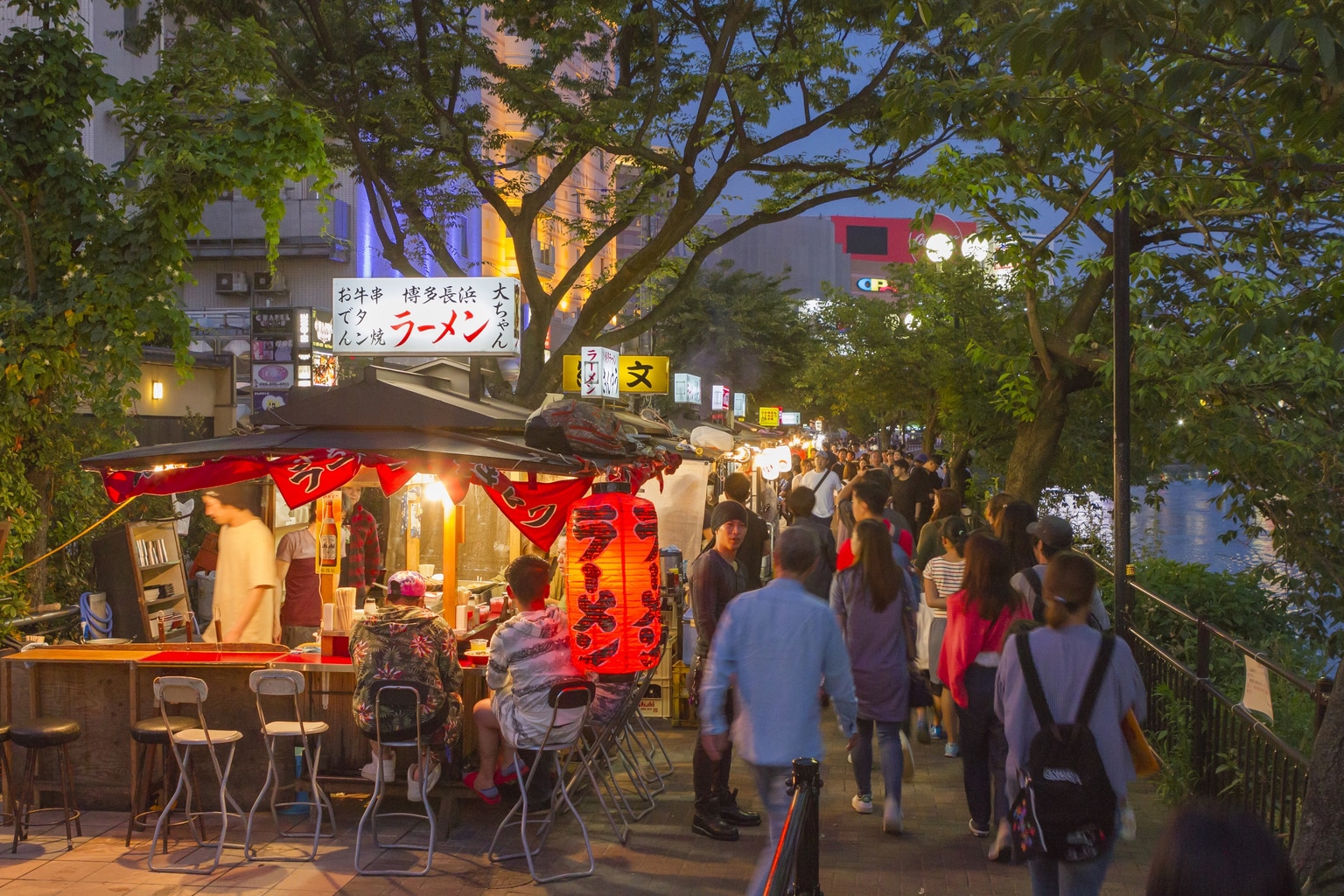
Day 3: Fukula and Kumamoto
10am – A One-Stop Cultural Spot
No matter what kind of activities you enjoy, you’ll find something to pique your interest at Fukuoka’s biggest green space, Ohori Park, and the adjacent Maizuru Park. The park area was once a part of the moat for Fukuoka Castle and is a popular spot for both tourists and locals. While away a few hours here at one of the cafés, playgrounds or walking courses if you want to take it easy. If you’re a history buff, head to the Fukuoka Castle ruins, where a virtual reality experience brings old stones back to life.
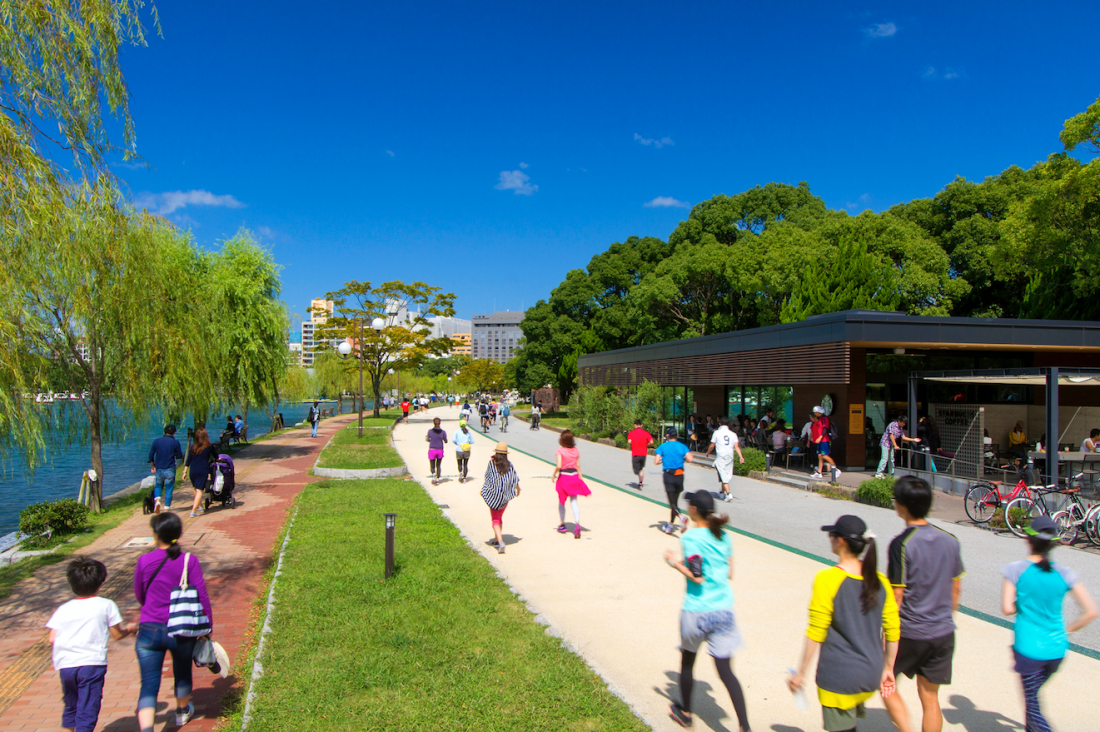
The Fukuoka Art Museum houses contemporary art by Yayoi Kusama, Salvador Dali, Andy Warhol and other acclaimed names. The Ohori Park Japanese Garden is a peaceful oasis in the middle of the city and is stunning year-round. If you’re here on the first or third Tuesday of the month, you can drop by the teahouse (usually available by reservation only) for a reasonably priced mini matcha green tea and confectionary set. For an interactive and intergalactic experience, head to the Fukuoka City Science Museum, which offers a closer look at the universe through the museum’s planetarium dome.
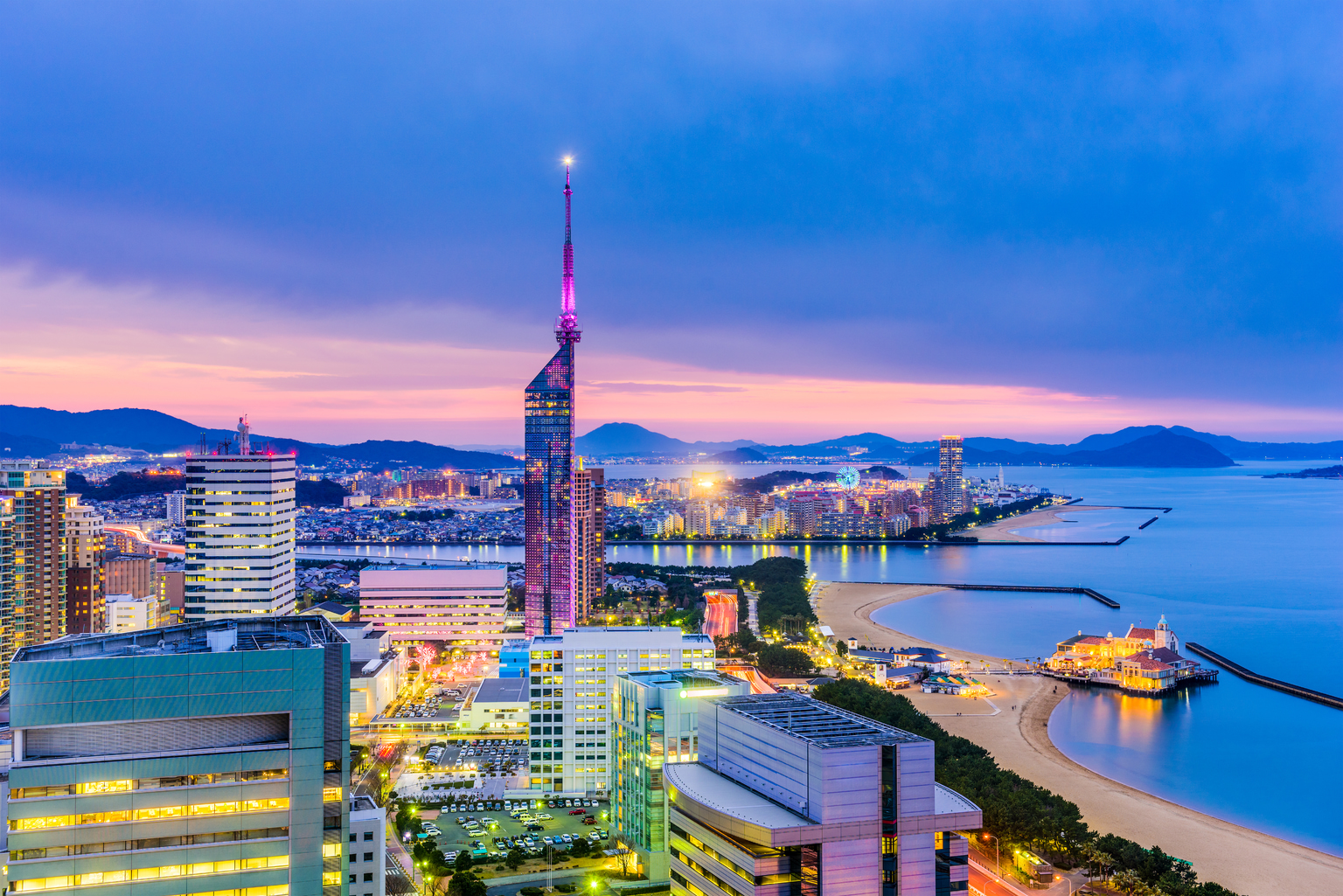
12pm – Ramen Time
Chow down on Kyushu’s famous tonkotsu (pork bone broth) ramen. This specialty dish originates in Fukuoka so you can’t throw a stone without hitting a top-notch ramen joint. Whether it’s a tiny hole-in-the-wall or world-famous chain restaurant, each place has its own special recipe so it’s almost worth hitting two or three different eateries if your stomach can handle it.
Now that you’ve sampled some of Fukuoka’s finest offerings, it’s time to head to a new city and a new prefecture…
Kumamoto city is a sprawling, modern place with one clear central point: Kumamoto Castle. Considered one of Japan’s three premier castles, this structure and its grounds create an awe-inspiring presence, and the samurai spirit here remains strong.
2pm – Tour a Samurai Abode
Though Kumamoto Castle was severely damaged in the 2016 Kumamoto earthquakes, it is undergoing reconstruction and is set to be completed in approximately 20 years’ time. Many inhabitants feel that the city cannot be considered fully recovered from the earthquake until the castle is properly restored. This will take time as workers are using old photos and documents together with modern technology to faithfully restore the castle.
Take a guided tour to learn about the castle, its samurai legacy and the reconstruction work. Book in advance at the Kumamoto Volunteer English Tour Guides website (www.k-yokatoko.com/english.html). Note that some areas are still not open to the public but there will be special viewings (9am to 5pm) on Sundays and national holidays from October 5, and on Saturdays only during the Rugby World Cup (October 5 to 12) and the Women’s Handball World Championship (November 30 to December 12). It will open on weekdays (1pm-5pm) from October 5 to 14 as part of the Kumamoto Castle Dai-Tenshu Facade Restoration Commemorative Week but visitors will only be able to enter special viewing areas.
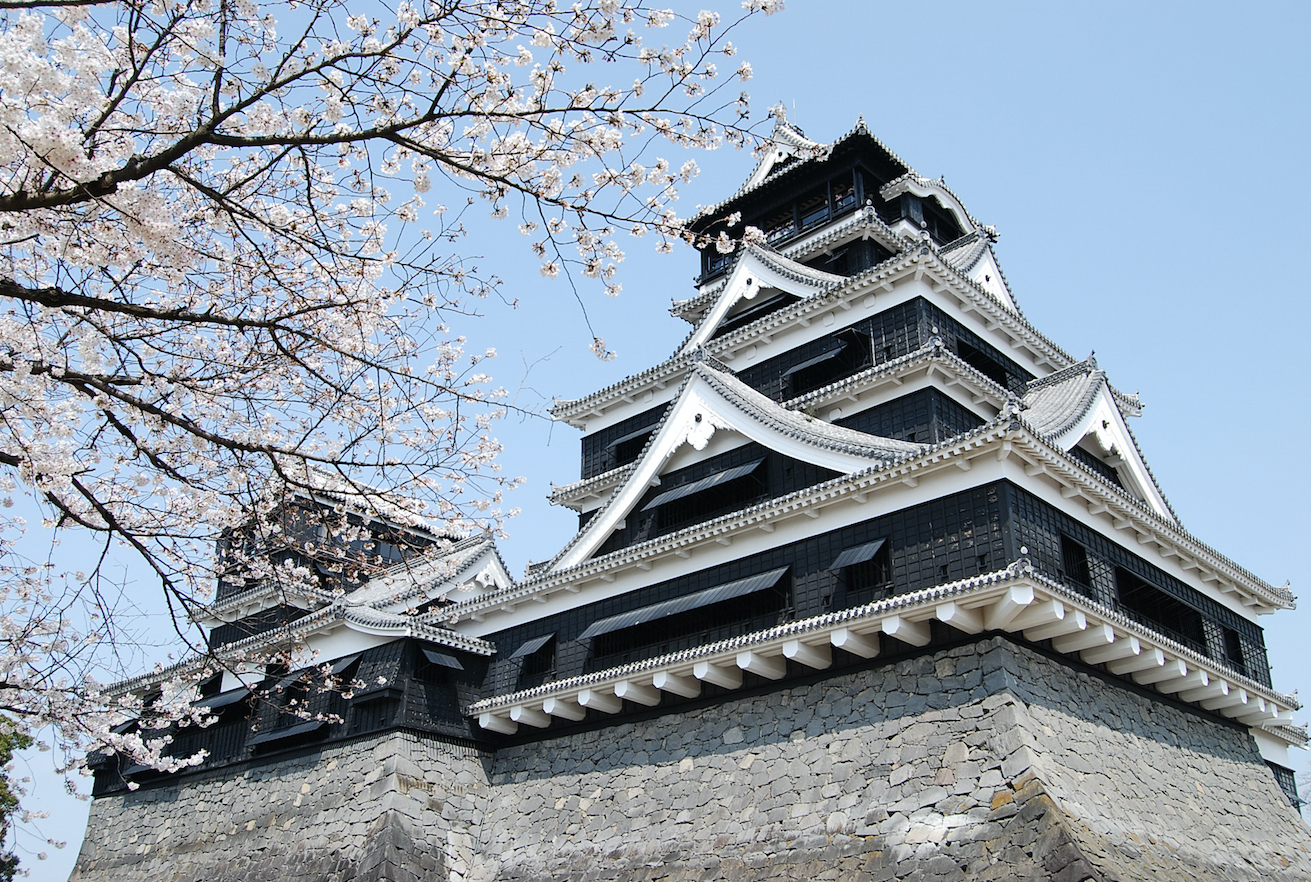
3:30pm – A Taste of History
For one of the best selections of Kumamoto’s specialties, souvenirs and snacks, look no further than Sakuranobaba Johsaien. It is located at the foot of Kumamoto Castle and is easy to access from the castle grounds either on foot or by free shuttle bus. Here you’ll get further insight into Kumamoto’s illustrious samurai history, culture and cuisine in one convenient location. For an in-depth exploration of the past, check out Wakuwakuza’s virtual reality exhibits, plays and live camera feeds of the Kumamoto Castle reconstruction work. You can also dress up in kimono or transform into a ninja or samurai and parade the traditional shopping arcade.
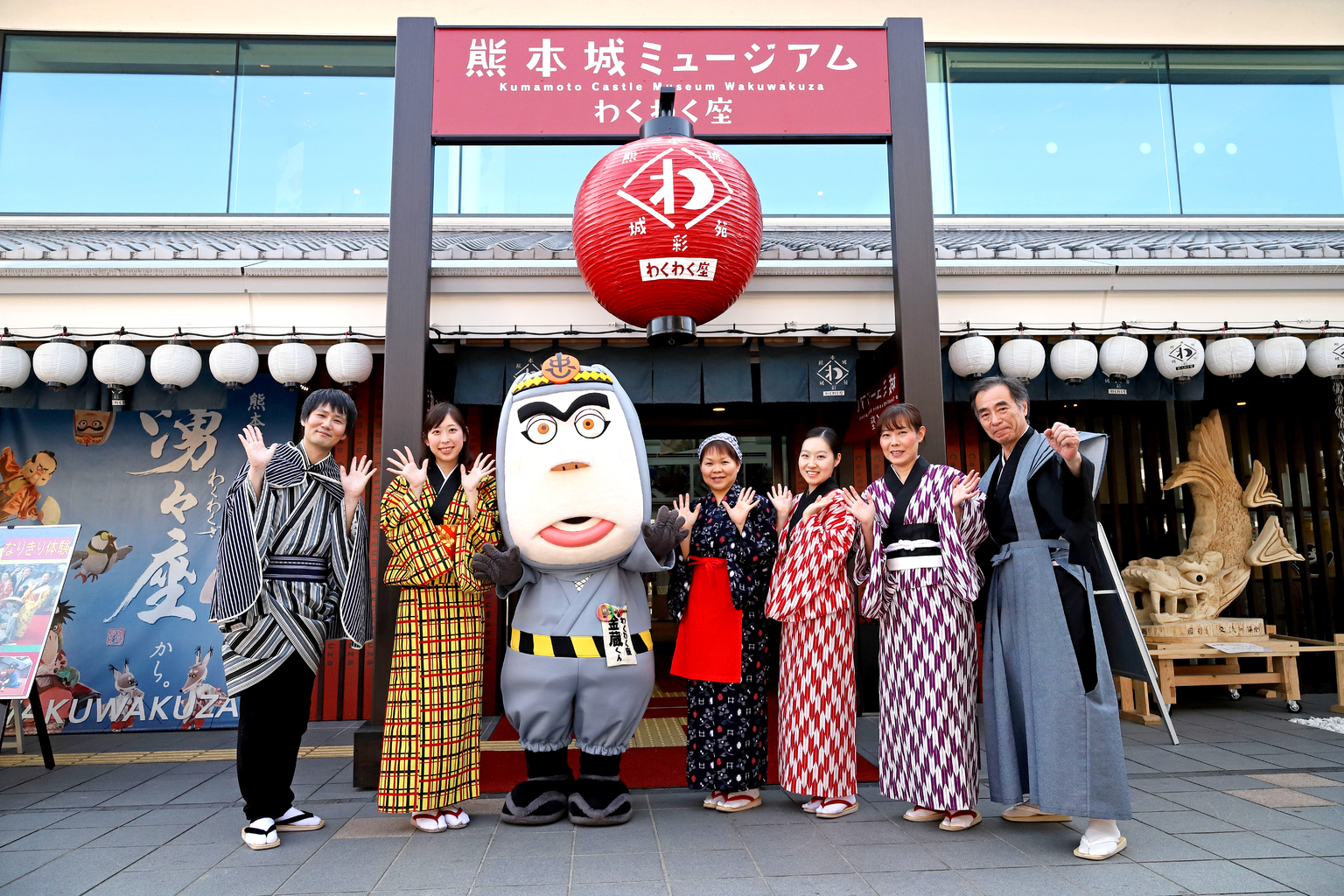
6:30pm – A Soak in Hot Springs
Now that you’re a few days into your trip, it’s time to relax and take it easy. Head to Ueki Onsen, a hot spring resort inside the Kumamoto city limits. Despite its city address, you’ll find rice paddies, a winding river and a sense of serenity in this perfect hot spring getaway. Ueki Onsen has more than 10 traditional inns and hotels to choose from, but you needn’t choose just one. Get a bathing coupon set and make your way around the various hotels, trying a bath at each one. The waters here are low in alkali, which is purported to be good for the skin.
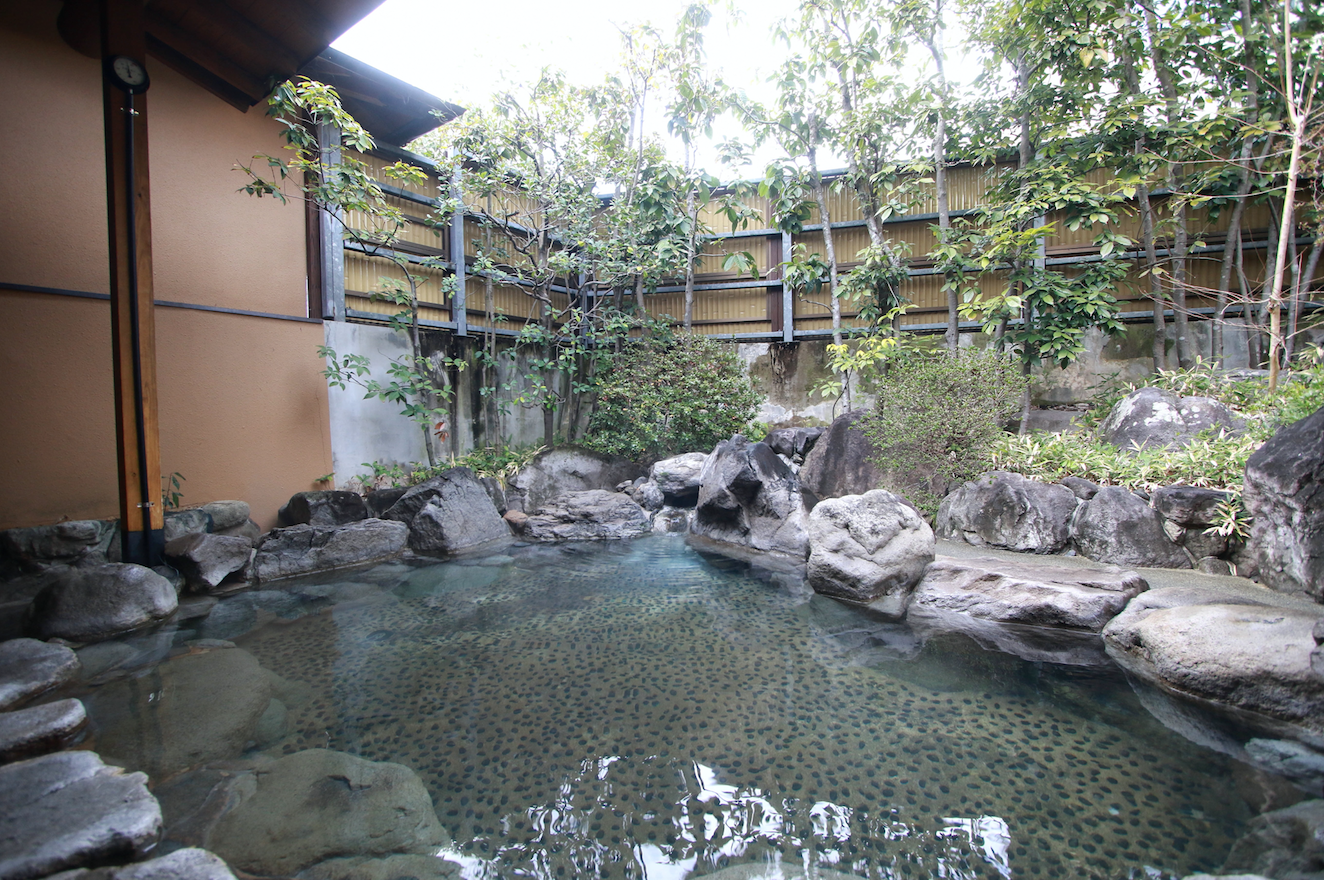
Retire at your chosen inn for the night and enjoy the ultimate Japanese omotenashi (traditional hospitality) with a traditional multicourse kaiseki meal before bed. If you’re feeling particularly adventurous, try a bite of basashi (raw horse meat), a local Kumamoto specialty.
Day 4: Kumamoto and Kagoshima
Start your morning with a soak in a hot spring to make the most of Ueki Onsen’s relaxing vibe before checking out and heading back into Kumamoto’s busy city center.
10am – Shopping Heaven
Now that you’re back in the heart of Kumamoto city, it’s time to explore one of its most famous shopping streets: Shimo-tori Shopping Street. You’ll find anything and everything you may need, and it’s a great place to people watch as locals go about their business.
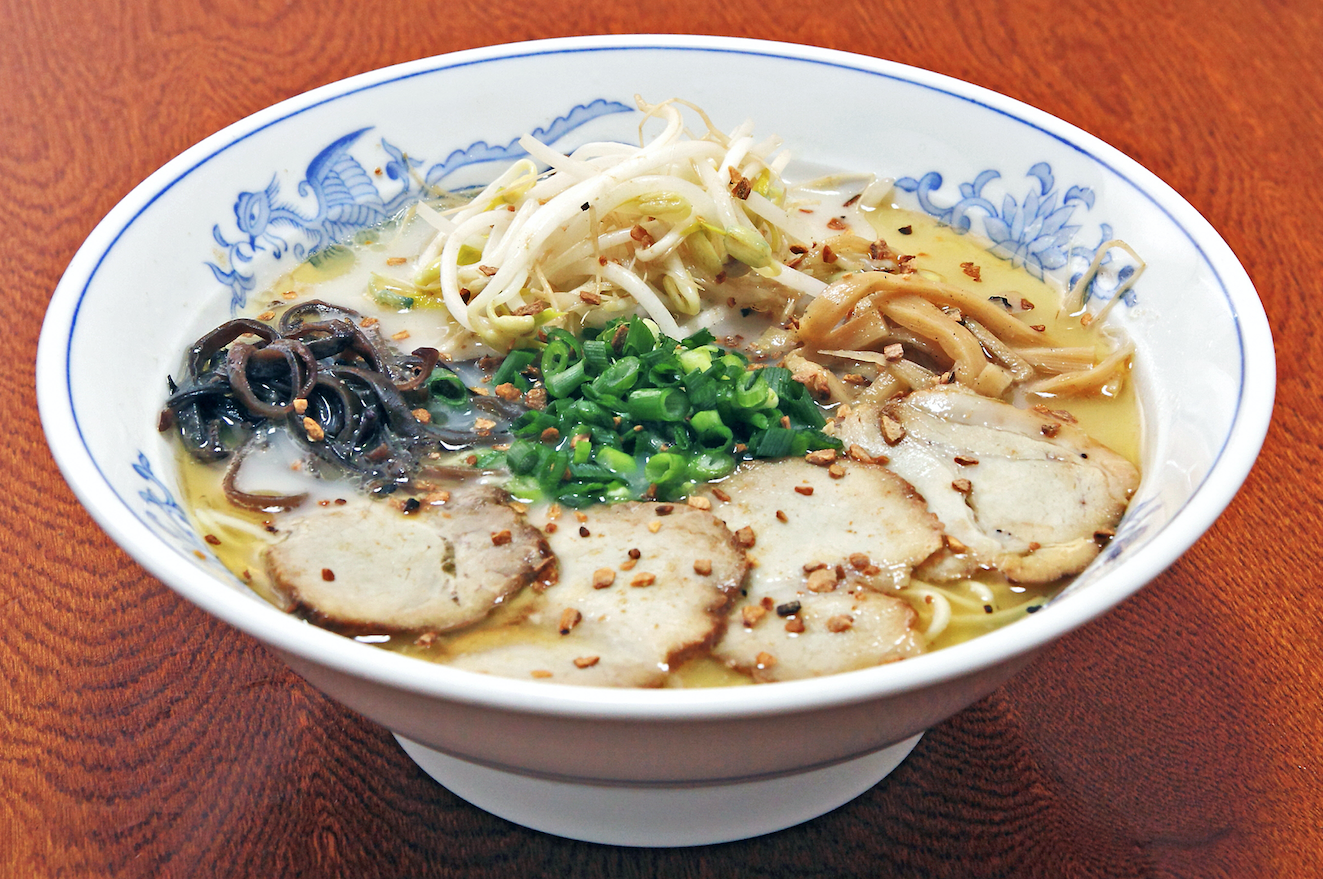
12pm – Kumamoto Magic
Scour the streets around Shimotori Shopping Street and beyond to find a spot for lunch before moving on to the next city. While there are plenty of mouthwatering dishes available, we recommend trying Kumamoto Ramen, a local specialty bursting with fragrant garlic in multiple forms for a pungent but delicious experience. Karashi renkon and hitomoji no guruguru are two excellent side dishes usually found in home kitchens, but often available at restaurants as well. Karashi renkon is a boiled lotus root filled with Japanese mustard and miso, then fried in batter. Hitomoji no guruguru consists of boiled green onions tied into knots and covered with a tart miso and mustard sauce. For something a little milder, try dagojiru, a mild miso soup with flat dumplings and brimming with fresh vegetables.
Hop on the shinkansen to head to the final city and prefecture on your trip. It only takes approximately 45 minutes from Kumamoto to Kagoshima – you’ll be in Kyushu’s southernmost prefecture before you know it.
Another notable region in Japan’s samurai history, Kagoshima city is located in what used to be known as the Satsuma Domain. The area played a vital role in moving Japan towards modernity and was ruled by the Shimadzu family, whose influence is still visible today at the breathtaking Sengan-en garden. On the peninsula across the bay from this well-curated space, you’ll find Sakurajima, an active volcano that towers over the city.
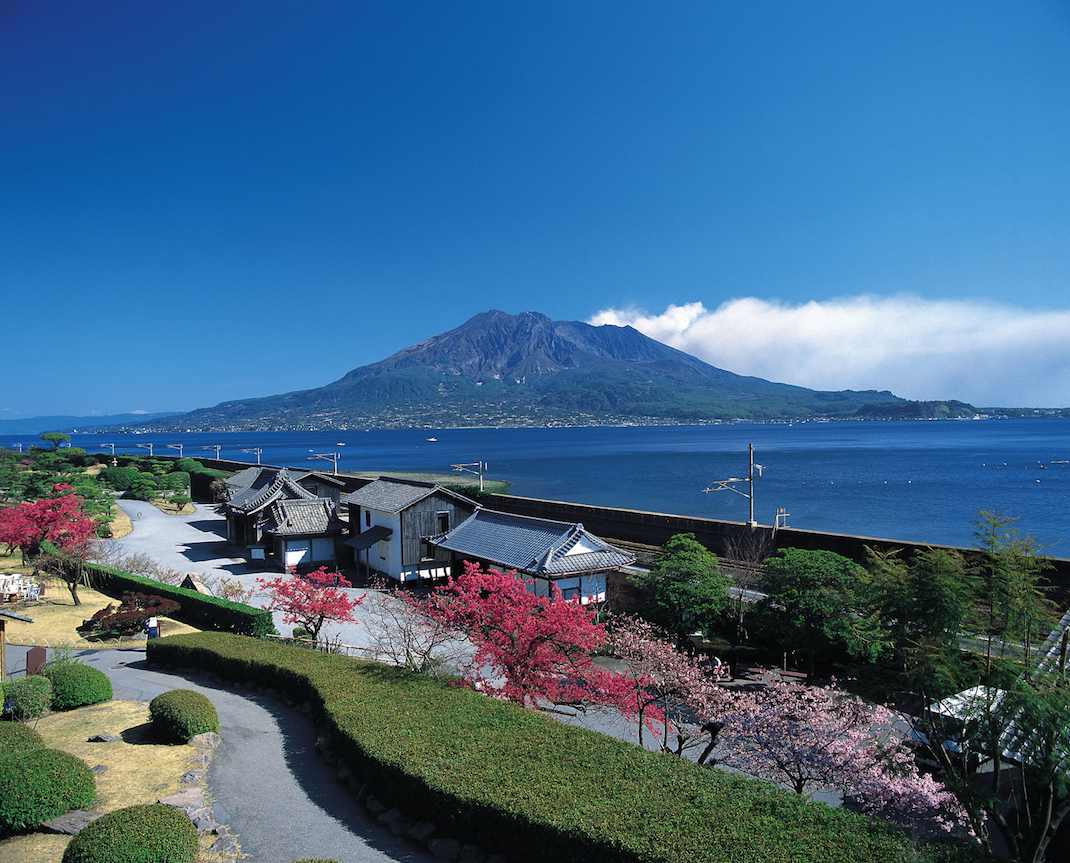
1:30pm – Ascend an Active Volcano
Take a ferry across the bay to explore Sakurajima, one of Kagoshima city’s most notable symbols. This active volcano – which sometimes erupts multiple times a day – stands at 1,117m high and occasionally sends up puffs of ash into the air. There are several observation decks around the Sakurajima peninsula so you can get a closer look at this amazing force of nature. The Sakurajima Visitor Center’s mini museum showcases facts about the volcano then and now, including diagrams of the 1914 eruption that was so powerful it made the former volcanic island of Sakurajima into the peninsula it is today. Whether you prefer to see it up close and personal or you are content to see it from afar, Sakurajima is a must for any visitor to Kagoshima.
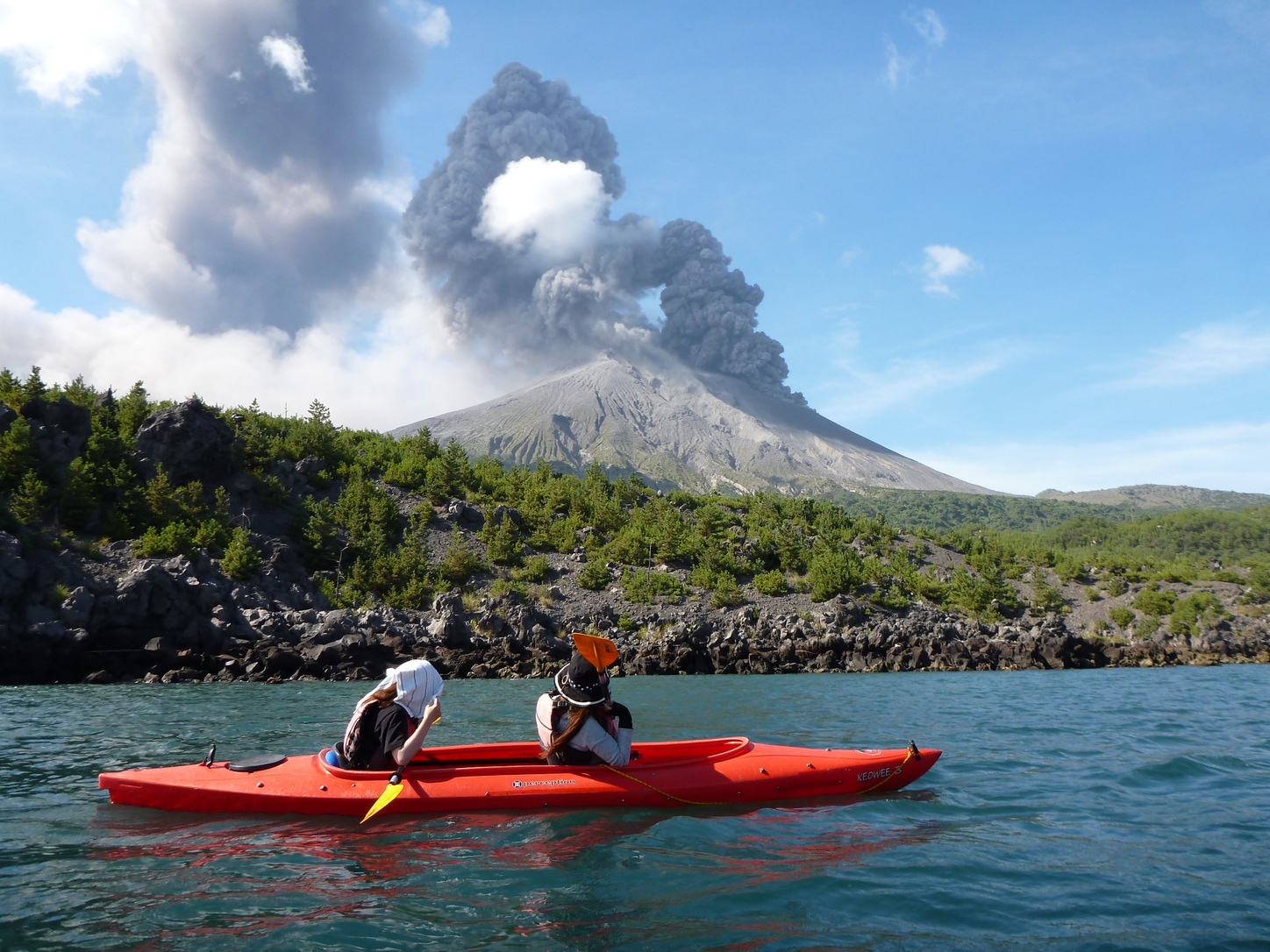
5:30pm – Kyushu Spirits and Soul Food
Head back into Kagoshima’s city center for dinner at Kagomma Furusato Yataimura to sample Kagoshima specialties and meet some locals from the area. Opened in 2012, this village of approximately 25 bars and eateries is a compact location and the perfect starting point to explore the region’s delights. Here you’ll find a thrilling selection of Kyushu’s famous spirit, shochu, rare delicacies such as raw chicken and unagi, as well as standard items such as ramen, tempura and skewered dishes galore.
10pm – Bed and Bath Time
For a peaceful night’s slumber, scale the Shiroyama Hill to reach Shiroyama Hotel Kagoshima. At 108m in height, the hotel looks over the city and across Kinko Bay to Sakurajima, offering panoramic views both day and night. The best view is found from the open-air hot spring baths (note that people with tattoos are not permitted to enter the shared baths).
Day 5: Kagoshima
10am – Samurai Gardens
The Shimadzu clan was one of the most powerful samurai families in Japan at one point and has owned Sengan-en, one of the most stunning gardens in Kyushu, for over three centuries. The gardens are vast and a joy to explore and offer multiple views of Sakurajima. Before heading out, take a tour around the house – a central location where state guests and foreign dignitaries were received in the 19th and 20th centuries. Wander up to the hiking trail towards the back of the garden to immerse yourself in its tranquility. You’ll be rewarded with a view over a beautiful waterfall and a commanding view of Kinko Bay and Sakurajima for your efforts.
Back in the main area of the garden you can try on authentic replica samurai armor (make sure to reserve at least three days in advance) for an unforgettable photo opportunity with Sakurajima as a backdrop. The garden also has several eateries and plenty of options for high-quality handcrafted souvenirs. Drop by next door to the Satsuma Kiriko Glassworks to marvel over master craftsmen cutting glass with ultimate precision, and skip into Shoko Shuseikan Museum to learn more about the Shimadzu family’s 800-year history.
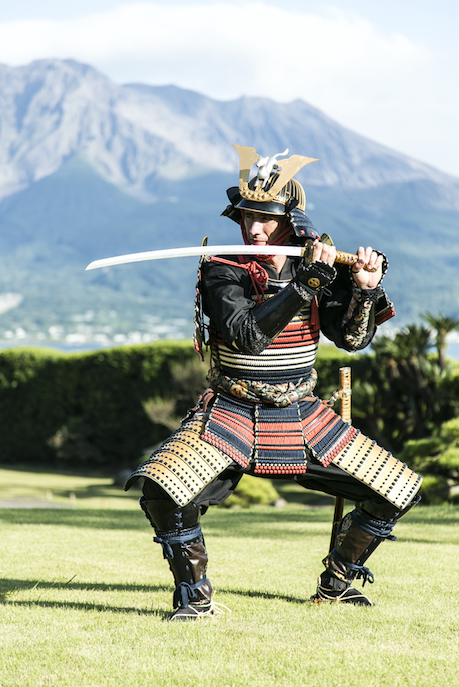
12pm – Perfect Pork
Kagoshima is famous for its black pork, known as kurobuta. It’s tender, rich in protein and vitamin B, and has an unrivaled natural sweetness due to the pigs being raised on sweet potatoes much of the year. It is often served either as tonkatsu (deep-fried pork cutlets) or shabu shabu (sliced into thin strips and dipped into a bubbling broth). Everyone has their favorite way to eat it, but you can’t go wrong with either of these two methods. There are excellent places to enjoy kurobuta across Kagoshima city, but Ichinisan is a guaranteed hit. Sure to satisfy any appetite, Ichinisan has a range of reasonably priced lunch sets ranging from lighter tofu-focused meals to larger portions for those with bigger appetites.
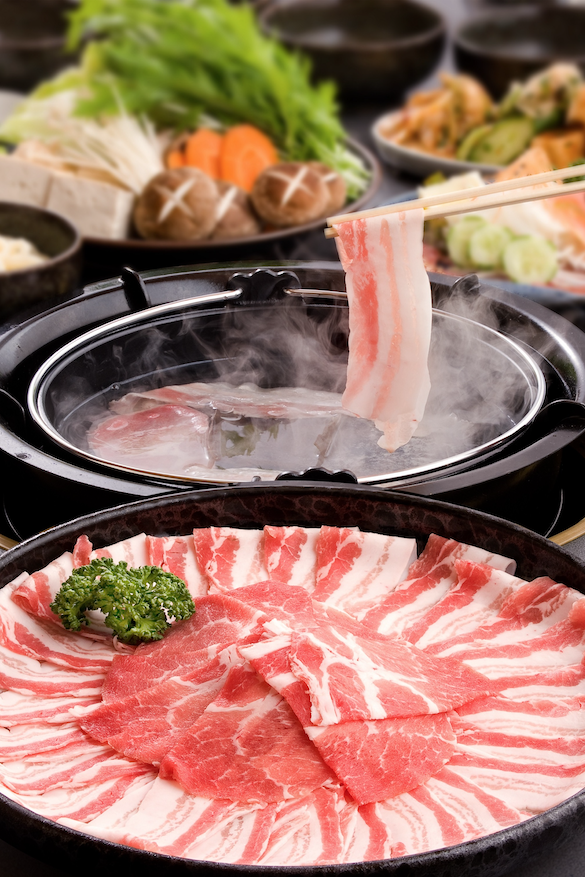
After spending five days and four nights exploring the southern island of Kyushu, it’s time to head back to Tokyo. Though Kyushu may feel like a whole world away, it takes less than two hours to fly there from Tokyo – a very doable distance for those who decide on a return visit.
For more information about each city, go to:
- Fukuoka: yokanavi.com/en/
- Kitakyushu: www.gururich-kitaq.com/en/
- Kukamoto: kumamoto-guide.jp/en/
- Kagoshima: www.kagoshima-yokanavi.jp/english/index.html
Updated On April 10, 2023

